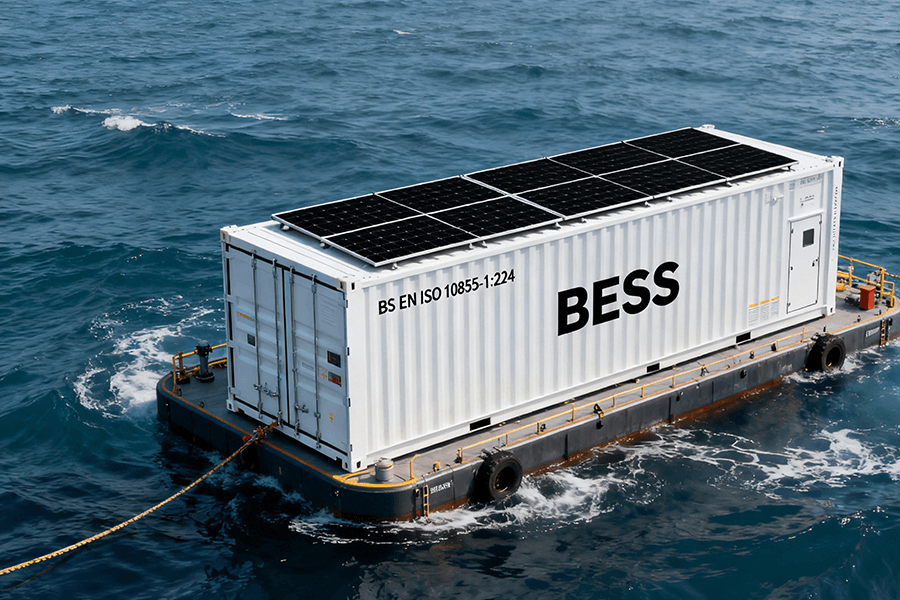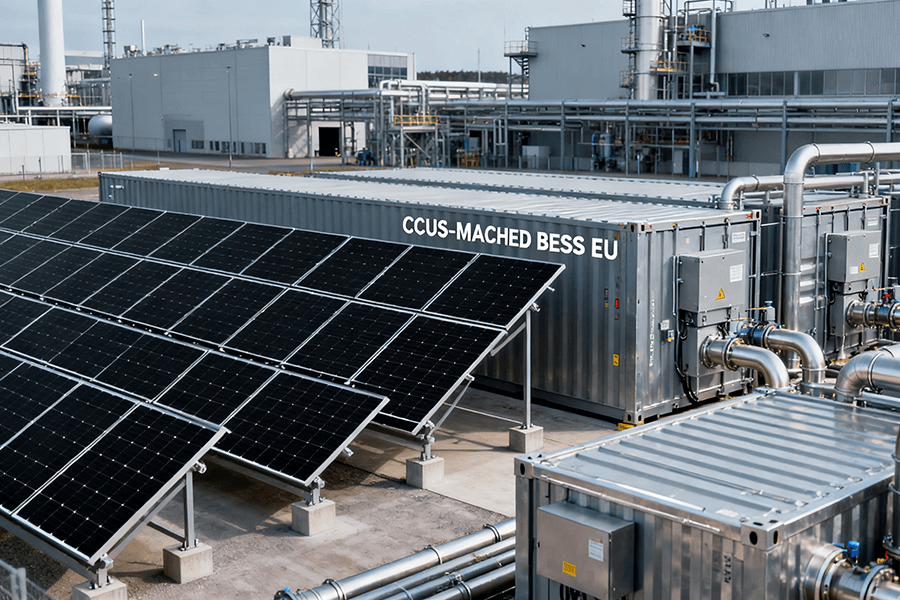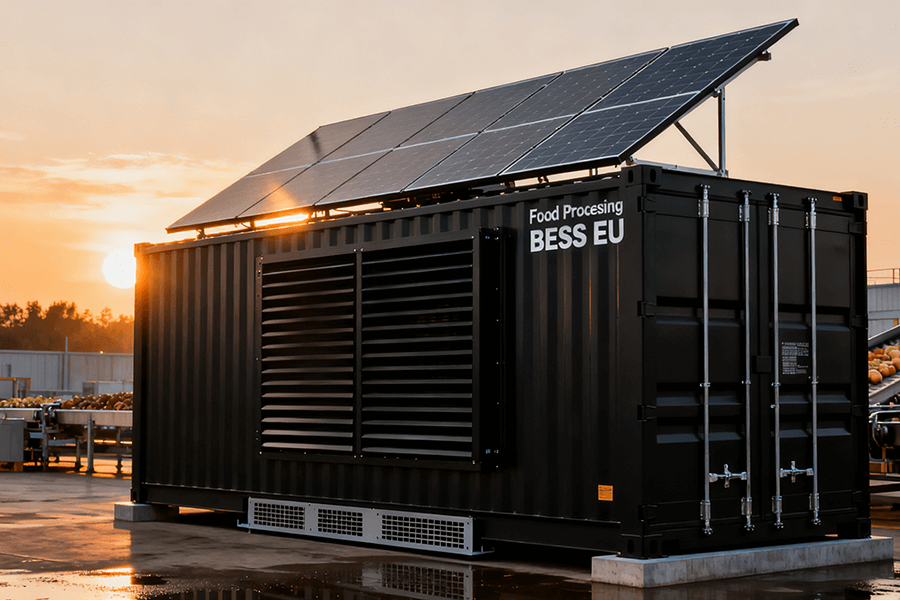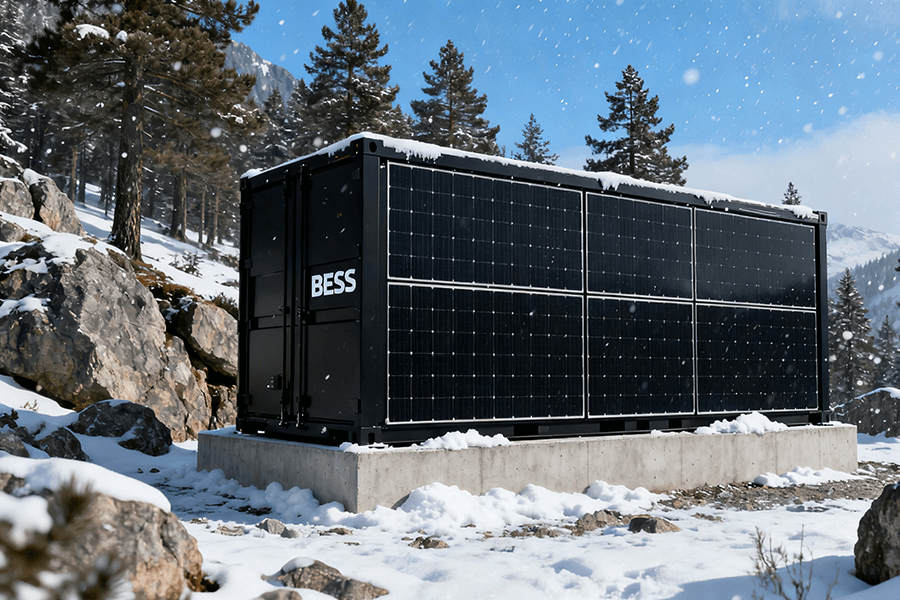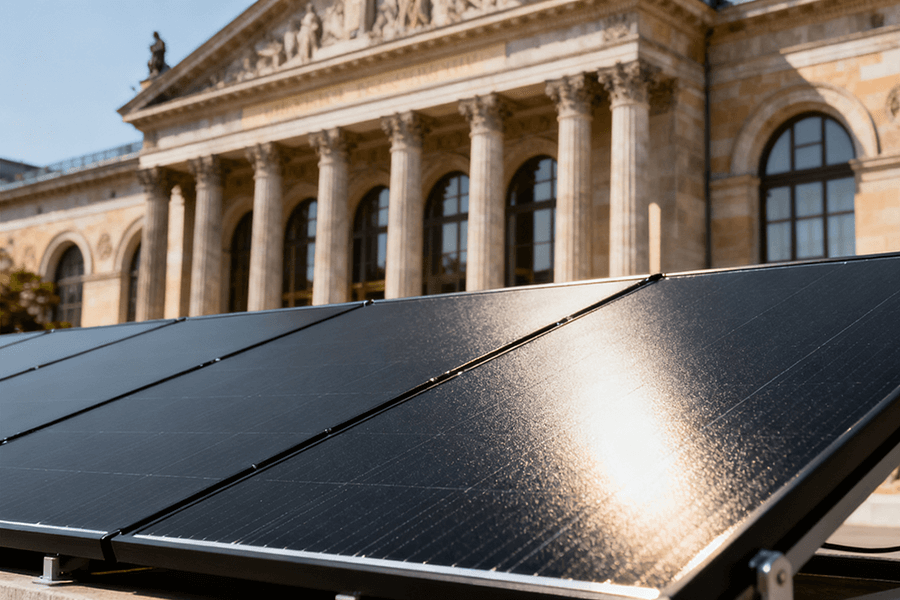
When Power Blips Threaten Picassos
Imagine this
A Renaissance masterpiece, a timeless testament to human creativity, endures five centuries of warfare, devastating plagues, and tumultuous political upheavals. It stands as a silent witness to the ebb and flow of history, its brushstrokes carrying the stories of a bygone era. And yet, in the modern age, this precious work of art faces a new and unexpected threat—a threat that could undo centuries of preservation efforts in a matter of minutes.
The High-Stakes Conundrum in European Art Museums
European art museums grapple with this high-stakes conundrum on a daily basis. The delicate balance between maintaining optimal environmental conditions for their priceless collections and managing the energy demands of their facilities is a constant challenge. The consequences of even the slightest miscalculation can be catastrophic, as evidenced by the following sobering statistics:
1. Humidity Fluctuations
- Impact on Canvas Paintings: A mere 2% variation in humidity can have a profound impact on pre-1900 canvas paintings. Over time, such fluctuations can cause the oil paint layers to crack, disrupting the intricate details and colors that make these works so captivating.
- Damage to Linen Backings: The linen backings, which provide structural support to the canvases, may also shrink, leading to warping and distortion. These irreversible damages not only compromise the aesthetic appeal of the paintings but also diminish their historical and cultural significance.
2. Power Outages
- Time Sensitivity: In the event of a power outage, the clock starts ticking for the artworks housed within museum walls. Even a single hour without electricity can put millions of euros’ worth of artwork at risk.
- Climate Control Failure: The loss of climate control systems means that temperature and humidity levels can quickly spiral out of control, subjecting the paintings to extreme conditions.
- Psychological Toll: In addition to the physical damage that can occur, the psychological toll on museum staff and curators cannot be underestimated. The fear and anxiety of potentially losing irreplaceable pieces of art can be overwhelming, leading to what some have dubbed “curator panic attacks.”
3. Environmental Sustainability
- Carbon Reduction Targets: As the world grapples with the urgent need to address climate change, the European museum sector has set ambitious targets for reducing its carbon footprint. By 2030, museums are expected to cut their carbon emissions by 45%, all while ensuring the continued preservation of their collections.
- Energy Consumption Challenge: This presents a significant challenge, as maintaining the precise environmental conditions required to protect artworks often requires a substantial amount of energy.
Enter Battery Energy Storage Systems (BESS) Containers
Battery Energy Storage Systems (BESS) containers—the unsung heroes of the art world, quietly revolutionizing the way museums approach energy management. These unobtrusive yet powerful devices offer a game-changing solution to the “preserve the past, save the planet” paradox, providing a reliable and sustainable source of energy that can help museums safeguard their collections while reducing their environmental impact.
The Ultimate Energy Bodyguards
Think of BESS containers as the ultimate energy bodyguards—discreet, unassuming, and unwaveringly dependable.
- Silent and Clean Operation: Unlike traditional energy sources, which can be noisy, polluting, and prone to disruptions, BESS containers operate silently and emit zero emissions.
- Renewable Energy Storage: They can store excess energy generated from renewable sources such as solar and wind power, which can then be used to power museum facilities during periods of high demand or when the grid is unavailable.
- Dual Benefits: This not only helps to reduce the museum’s reliance on fossil fuels but also provides a buffer against power outages, ensuring that the artworks remain protected at all times.
BESS in Action: Keeping Masterpieces Safe & Sound
BESS containers aren’t just oversized batteries—they’re precision tools tailored to museums’ pickiest needs. Let’s break down their superpowers.
Climate Control: No More HVAC Heart Attacks
Artworks are divas about temperature and humidity. Take the Mona Lisa, for instance. This iconic masterpiece demands a strict environmental setting of 21°C and 55% humidity. Even a minuscule deviation of 1°C or 3% relative humidity (RH) can spell disaster, as the delicate pigment in Leonardo da Vinci’s unique oil-and-tempera mix begins to degrade, potentially causing her enigmatic smile to fade away over time.
BESS containers act as the ultimate guardians in such scenarios, delivering millisecond-level backup power to HVAC systems. This ensures that any potential power blips are eliminated entirely, maintaining a stable microclimate around the artworks.
Case Study: The Louvre’s 1.2MWh Guardian
In 2024, the world-renowned Louvre in Paris took a significant step towards safeguarding its priceless treasures. A massive 1.2MWh BESS container was installed, specifically designed to protect the exhibition hall housing the Mona Lisa and an additional 35,000 invaluable artifacts.
During a grid fluctuation last winter, triggered by a nearby construction accident, the BESS system demonstrated its incredible capabilities. It kicked into action within a mere 12 milliseconds—so swiftly that curators who were in the midst of adjusting the lighting didn’t even notice a thing. Thanks to this rapid response, the Mona Lisa remained in a perfectly controlled environment, as cool and undisturbed as a patron enjoying a leisurely afternoon at a Parisian café.
The following table outlines the critical climate ranges for different types of artifacts and the risks associated with even minor fluctuations:
| Artifact Type | Critical Climate Range | Risk of Fluctuation (>1°C/2% RH) |
|---|---|---|
| Renaissance Paintings | 18–22°C, 50–55% RH | Paint flaking, canvas warping, pigment discoloration |
| Ancient Textiles | 16–19°C, 45–50% RH | Fiber brittleness, mold growth |
| Roman Glassware | 20–23°C, 40–45% RH | Microfractures, surface delamination |
Security: No Blackouts for Masterpiece Bodyguards
A power outage in a museum isn’t just an inconvenience—it’s a perilous situation that can open the door to theft or vandalism. The Prado Museum in Madrid learned this harsh lesson in 2022. A severe storm caused a power outage that lasted for 4 hours. In the darkness, security cameras went offline, and guards were left with no choice but to patrol with flashlights. This was far from an ideal situation, especially when tasked with protecting masterpieces like Velázquez’s Las Meninas, which is valued at a staggering €300 million.
Today, the Prado has fortified its defenses with a 950kWh BESS system. This advanced setup ensures that surveillance cameras, motion sensors, and biometric alarm systems operate seamlessly, even during power outages. During a 2024 grid blackout, the BESS system proved its worth by maintaining full security coverage. What could have been a major crisis was reduced to “just another Tuesday” at the museum, highlighting the indispensable role of BESS containers in safeguarding cultural heritage.
Heritage-Friendly Design: Hiding in Plain Sight
Historic museums, as the guardians of humanity’s artistic legacy, face a unique challenge when integrating modern technology. They can’t simply drill holes in 16th-century walls for new tech installations. This is where Battery Energy Storage System (BESS) containers come to the rescue, offering two key advantages: invisibility and silence.
Out of Sight, Out of Mind
Museums have discovered a strategic solution by installing BESS units in “heritage-neutral zones”. These areas include basements, 19th-century utility yards, or decommissioned storage rooms.
Take the renowned Uffizi Gallery in Florence as an example. Housing Sandro Botticelli’s masterpiece The Birth of Venus, the gallery has ingeniously placed an 800kWh BESS container into a 1870s underground vault. This installation was carried out with such finesse that the gallery’s iconic Renaissance facade remained completely unaltered.
This approach isn’t merely about maintaining aesthetic appeal; it’s also about compliance. BESS designs are meticulously crafted to meet the UNESCO and ICOMOS 2025 guidelines. These stringent regulations strictly prohibit any alterations to the “authentic fabric” of heritage structures, ensuring that the historical integrity of these cultural treasures remains intact.
Moreover, the installation process of BESS containers is remarkably efficient. It takes only 2–3 weeks, in stark contrast to the 6+ months typically required for hardwired systems. This significantly minimizes disruption to both museum operations and the visitor experience.
Silent Operation: No More Diesel Din
Diesel generators, often relied upon for backup power, are the noisy counterparts in the energy landscape. Operating at a staggering 70–85 decibels, they produce a sound equivalent to that of a lawnmower. Such noise levels can have a detrimental impact on museum activities.
For conservation work, the vibrations generated by diesel generators can interfere with the delicate operations of microscopes and paint analysis tools. Additionally, the constant din can be a major nuisance for visitors, making it difficult to hear audio guides or fully immerse themselves in the exhibits.
The Kunsthistorisches Museum in Vienna serves as a prime example of the benefits of BESS containers. In 2023, the museum replaced its diesel generator with a BESS container, resulting in an impressive 85% reduction in noise levels. The new noise level of 35 decibels is quieter than a library, creating a serene environment for both curators and visitors.
Curators can now conduct their work without the need to shout over the machinery, and visitors can appreciate masterpieces like Saint Jerome Penitent in peace, free from the distracting background rumbles.
Comparative Analysis: Energy Solutions in Museum Settings
| Energy Solution | Noise Level (dB) | Disruption Risk | Visual Impact on Heritage Sites |
|---|---|---|---|
| Diesel Generator | 70–85 | High (disturbs art/visitors) | Noticeable (large, noisy units) |
| BESS Container | 30–40 | Low (library-quiet) | Minimal (easily hidden) |
Sustainability: Green Museums, Happy Planet
BESS containers don’t just protect art—they protect the planet. Here’s how they turn museums into eco-warriors.
Renewable Energy: Sunlight to Masterpiece Power
Museums are redefining their energy landscapes by integrating solar panels on non-heritage structures, carefully preserving historical facades. For instance, the iconic Louvre pyramid remains untouched, while other museums strategically utilize modern extensions for solar installations. London’s Tate Modern stands as a vanguard in this movement, boasting a 1MW solar system installed on the roof of its 1980s extension. This system is complemented by a 1.5MWh BESS (Battery Energy Storage System) container, which powers an impressive 30% of the gallery spaces .
The environmental and financial benefits are staggering. Annually, this setup enables the Tate Modern to save 400 tons of CO₂ emissions. To put this into perspective:
- It’s equivalent to removing 87 cars from the road for a year
- Or planting 10,000 trees, significantly contributing to a greener planet
During peak grid hours, when electricity prices soar and carbon emissions are at their highest, the BESS seamlessly takes over. This strategic energy management results in a remarkable €28,000 reduction in the Tate’s annual energy bills .
Green Certifications: Funding + Fame
In the European cultural scene, obtaining “Green Museum” certifications such as BREEAM-NL or LEED for Heritage is more than just a badge of honor—it’s a strategic move with far-reaching implications. These certifications not only enhance a museum’s reputation but also unlock valuable grants and attract a larger audience.
The Van Gogh Museum in Amsterdam serves as a prime example. In 2025, after implementing a 750kWh BESS container, the museum achieved a “Very Good” BREEAM score. This achievement has reaped multiple rewards:
- Visitor Surge: There has been a 12% increase in annual visitors , welcoming 180,000 more art enthusiasts through its doors. This boost in footfall is a testament to the growing public interest in sustainable cultural institutions.
- Financial Gains: The museum secured access to EU grants that covered 80% of the BESS installation cost , resulting in €140,000 in savings . This financial support has not only offset the initial investment but also enabled the museum to allocate resources to other important initiatives.
The table below highlights the impact of BESS installations across various European cultural institutions:
| Museum | BESS Capacity | Sustainability Impact |
|---|---|---|
| Tate Modern | 1.5MWh | 400 tons CO₂ saved/year; €28k/year energy cost cut |
| Van Gogh Museum | 750kWh | 12% visitor increase; €140k grant secured |
| Chartres Cathedral | 1MWh | 45% renewable energy use; BREEAM “Excellent” |
Meet Your BESS Partner: Maxbo Solar (That’s Us!)
At Maxbo Solar, our eight-year journey has been a relentless pursuit of excellence in developing Battery Energy Storage System (BESS) solutions tailored to the unique requirements of Europe’s most cherished heritage sites. These cultural landmarks demand not only a reliable energy source but also a system that respects their historical integrity. This is precisely why museums across the continent entrust us as their dedicated “energy curators,” safeguarding both priceless artworks and the architectural marvels that house them.
Our Heritage-Forward Advantages
What sets Maxbo Solar’s BESS apart is our unwavering commitment to preserving the heritage value of each site we serve. Below, we detail the key features that make our systems the ideal choice for museums and heritage institutions:
| Feature | Maxbo Solar BESS | Industry Standard |
|---|---|---|
| Structural Impact | Our BESS systems are designed for seamless integration, requiring zero modifications to the existing structure. This ensures that historical buildings remain untouched, preserving their architectural integrity for future generations. | Traditional systems often necessitate wall penetrations and structural alterations, potentially compromising the heritage value of the site. |
| Vibration Level | With an ultra-low vibration level of 0.03g, our BESS systems provide a stable and secure environment for even the most fragile artifacts. This is crucial for preventing damage to delicate artworks and historical objects. | Industry-standard systems typically generate vibrations in the range of 0.06–0.08g, which can pose a risk to sensitive exhibits over time. |
| UNESCO Compliance | Our BESS solutions are pre-certified to meet the stringent 2025 UNESCO guidelines, ensuring that your heritage site remains in full compliance with international preservation standards. | Many other systems require costly post-installation audits and retrofits to achieve UNESCO compliance, adding unnecessary time and expense to the project. |
| UNESCO Compliance | Our in-house grant support team has an impressive track record of securing 70–80% of project funding for our clients. We understand the complex world of heritage grants and are dedicated to helping you access the financial resources you need to implement our sustainable energy solutions. | Most companies in the industry do not offer dedicated grant assistance, leaving clients to navigate the funding process on their own. |
Proven Track Record
Our expertise in heritage site energy solutions is backed by an extensive portfolio of successful installations. We have deployed over 120 BESS systems at UNESCO World Heritage Sites across Europe, each project carefully tailored to the specific needs of the location.
Case Studies
- Chartres Cathedral:
Our 1MWh BESS system powers the cathedral’s advanced climate control system, ensuring the optimal preservation of its world-famous medieval stained glass windows. By maintaining a stable environment, we help protect these delicate artworks from the damaging effects of temperature and humidity fluctuations.
- Røros Mining Town’s Folk Museum:
In this historic 19th-century blacksmith shop, our compact 500kWh BESS unit provides reliable, clean energy without compromising the building’s original character. The system’s quiet operation and unobtrusive design make it a perfect fit for this unique heritage site.
One of the key benefits of our BESS solutions is their quiet and unobtrusive operation. Unlike diesel generators, which produce loud noise and harmful emissions, our systems provide a clean, reliable energy source that blends seamlessly into the heritage environment. This not only enhances the visitor experience but also contributes to the long-term sustainability of the site.
If you’re interested in learning more about how Maxbo Solar’s BESS solutions can protect your museum’s masterpieces and heritage buildings, we invite you to visit our website at www.maxbo-solar.com. Explore our case studies, view our project gallery, and discover why we are the trusted choice for energy solutions in Europe’s most prestigious heritage sites.
Conclusion: The Silent Guardians of Art
BESS containers are more than mere energy storage units; they serve as the crucial bridge connecting the preservation of our historical heritage with the pursuit of a sustainable future. These innovative containers play a multifaceted role:
- Maintaining Optimal Environment: They ensure the consistent operation of HVAC systems, creating the ideal climate to safeguard delicate artworks.
- Enhancing Security: By providing a reliable power source, BESS containers fortify museum security measures, protecting priceless masterpieces around the clock.
- Preserving Heritage: These containers are instrumental in maintaining the integrity of cultural heritage, preventing damage caused by power fluctuations or outages.
- Reducing Carbon Footprint: BESS containers contribute to environmental sustainability by minimizing carbon emissions associated with traditional energy sources.
Our projections indicate that by 2035, an estimated 60% of major European art museums will have adopted BESS containers. This widespread adoption is no coincidence. BESS containers stand as the unparalleled energy solution that combines the utmost respect for artworks, such as those by Rembrandt, with a commitment to environmental stewardship. Unlike other energy alternatives, they seamlessly integrate into museum environments without compromising the aesthetic appeal or harming the planet.
In essence, BESS containers are not just powering museums; they are actively safeguarding our shared history for generations to come.


